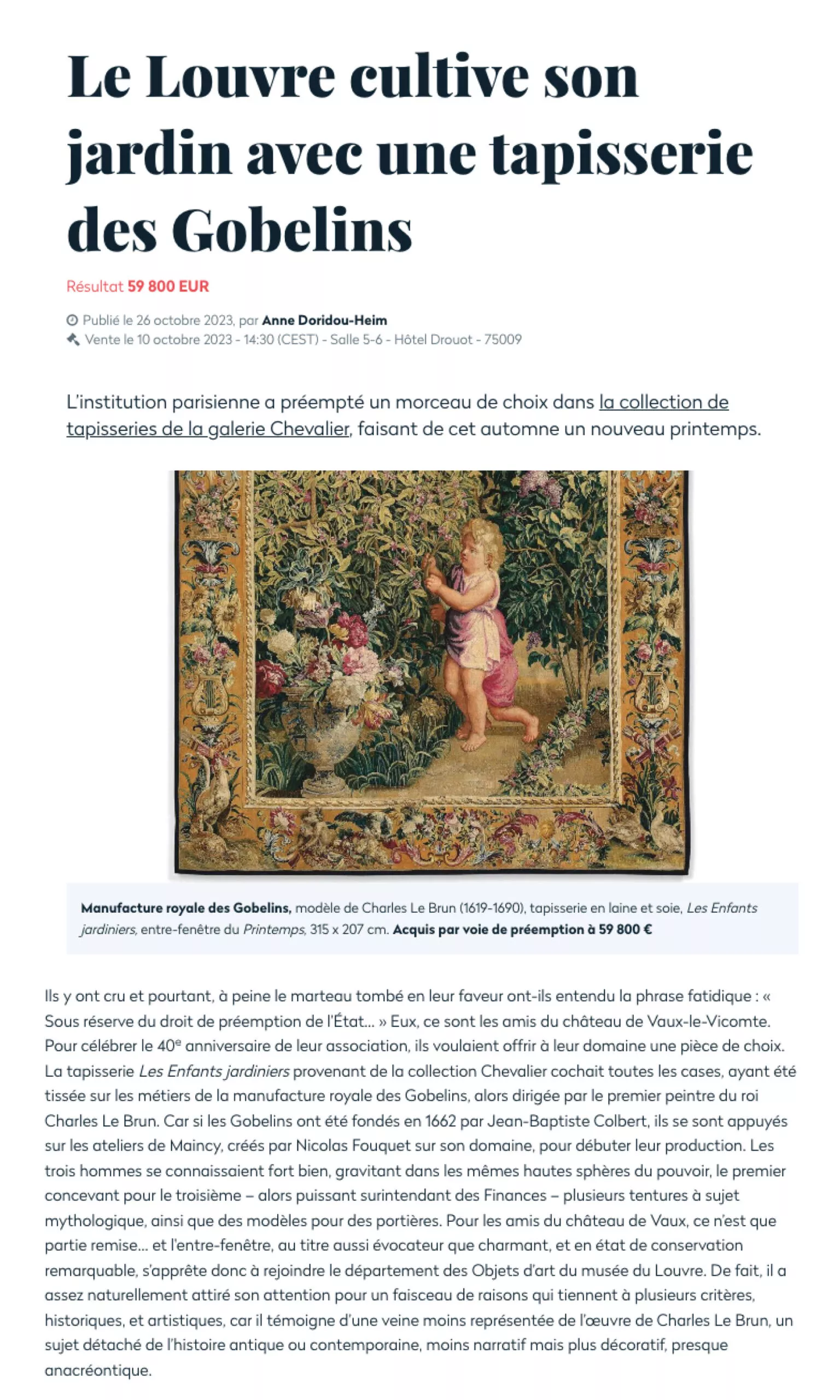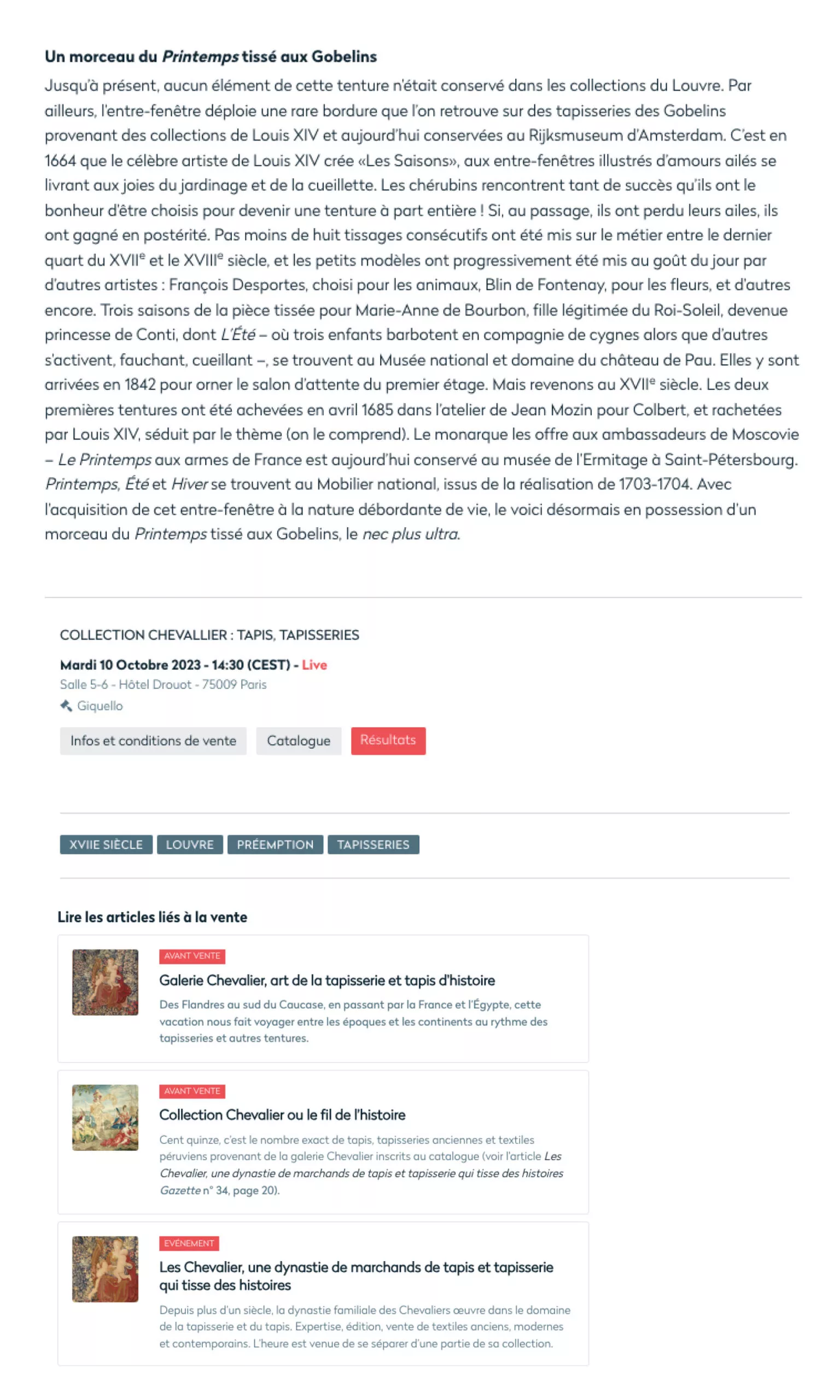THE LOUVRE CULTIVATES ITS GARDEN WITH A GOBELIN TAPESTRY


They believed in it and yet, as soon as the hammer fell in their favor, they heard the fateful sentence: “Subject to the right of pre-emption of the State…” They are the friends of the Château de Vaux-le-Vicomte . To celebrate the 40th anniversary of their association, they wanted to offer their estate a piece of choice. The Les Enfants jardiniers tapestry from the Chevalier collection ticked all the boxes, having been woven on the looms of the royal Gobelins factory, then headed by the king’s first painter Charles Le Brun. Because if the Gobelins were founded in 1662 by Jean-Baptiste Colbert, they relied on the Maincy workshops, created by Nicolas Fouquet on his estate, to begin their production. The three men knew each other very well, gravitating in the same high spheres of power, the first designing for the third – then powerful superintendent of Finance – several hangings on mythological subjects, as well as models for doors. For friends of the Château de Vaux, it is only a postponement… and the window, with a title as evocative as it is charming, and in a remarkable state of conservation, is therefore preparing to join the Department of Objects of Art from the Louvre Museum. In fact, it quite naturally attracted his attention for a range of reasons which relate to several historical and artistic criteria, because it testifies to a less represented vein of the work of Charles Le Brun, a subject detached from the ancient or contemporary history, less narrative but more decorative, almost anacreontic.
A piece of Spring woven at Gobelin
Until now, no element of this hanging was preserved in the Louvre collections. Furthermore, the window displays a rare border found on Gobelins tapestries from the collections of Louis XIV and today kept at the Rijksmuseum in Amsterdam. It was in 1664 that the famous artist of Louis The cherubs are so successful that they are lucky enough to be chosen to become a wall hanging in their own right! If, in the process, they lost their wings, they gained posterity. No less than eight consecutive weavings were put on the loom between the last quarter of the 17th and the 18th century, and the small models were gradually brought up to date by other artists: François Desportes, chosen for the animals, Blin de Fontenay, for flowers, and others. Three seasons of the play woven for Marie-Anne de Bourbon, legitimized daughter of the Sun King, who became Princess of Conti, including Summer – where three children splash around in the company of swans while others are busy, mowing, gathering –, are located at the National Museum and Château de Pau estate. They arrived there in 1842 to decorate the waiting room on the first floor. But let’s go back to the 17th century. The first two hangings were completed in April 1685 in the workshop of Jean Mozin for Colbert, and purchased by Louis XIV, seduced by the theme (we understand). The monarch offers them to the ambassadors of Muscovy – The Spring with the Arms of France is today kept at the Hermitage Museum in Saint Petersburg. Spring, Summer and Winter can be found in the Mobilier national, from the creation of 1703-1704. With the acquisition of this window with nature overflowing with life, he is now in possession of a piece of Spring woven at Gobelins, the ultimate.